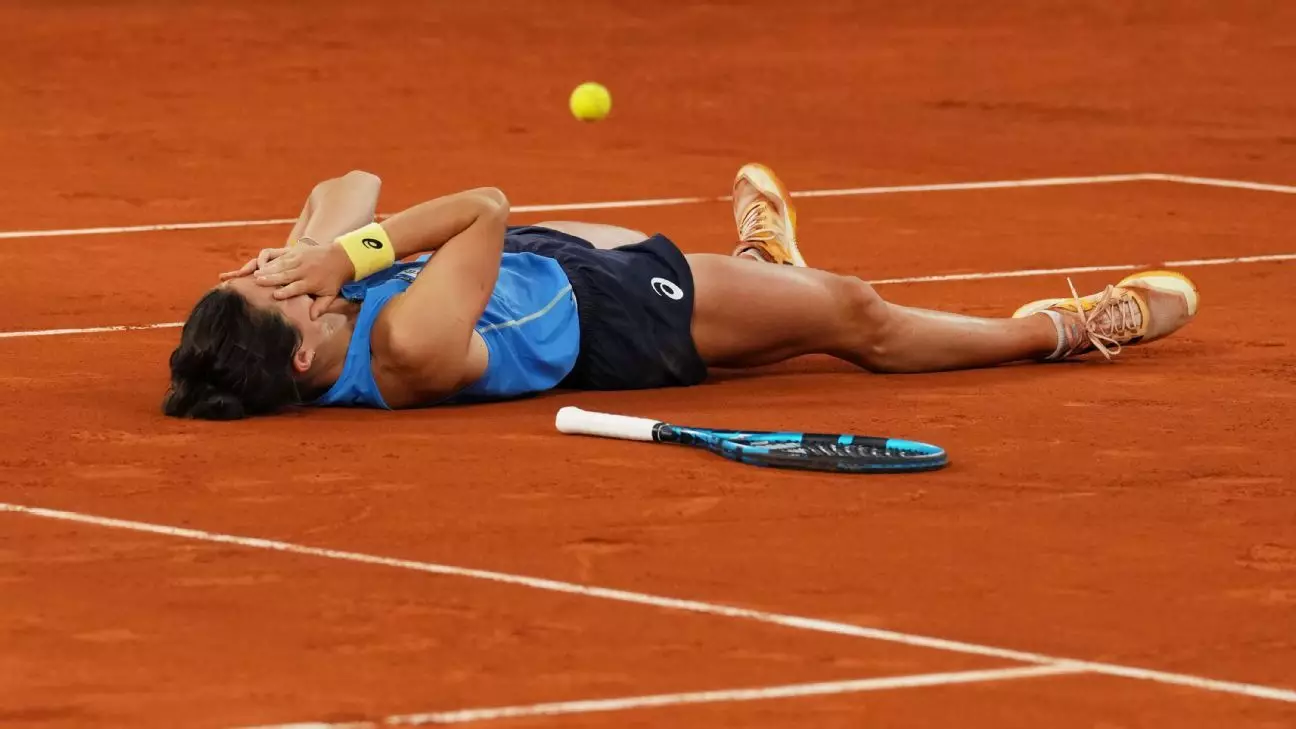In the thrilling world of tennis, surprises are often the flavor of the day, yet nothing could quite prepare fans for Loïs Boisson’s extraordinary ascent at the French Open. The young French wild-card entry, ranked a staggering No. 361 in the WTA, achieved an incredible feat by defeating sixth-ranked Russian player Mirra Andreeva 7-6 (6), 6-3. As she stood on the famed red clay of Roland Garros before an electric crowd, Boisson didn’t just win a match; she ignited hope and excitement in the hearts of countless fans who rallied passionately behind her.
Boisson’s victory has become a significant milestone in women’s tennis, marking her as the first woman since Jennifer Capriati in 1990 to reach the semifinals of her debut Grand Slam tournament. To say she has disrupted the status quo would be an understatement. Adding to her distinct accomplishments, she is the first wild card to ever achieve this at the French Open in the Open era, a testament to her phenomenal talent and sheer determination.
The Crowd Phenomenon
What made this match truly unforgettable was not solely Boisson’s impressive skills, but also the vibrant atmosphere cultivated by a swarm of local supporters. Boisson repeatedly expressed gratitude to the crowd, noting, “It’s incredible. Thank you for supporting me like this. I have no words.” There is a tangible synergy when a player is backed by a crowd that is not just watching but living every moment of the match.
However, this environment can create a double-edged sword. As Andreeva struggled to keep her composure amidst the cacophony of chants of “Lois, Lois,” there was an unmistakable tension that built over the course of the match. Andreeva, a seasoned competitor, displayed her displeasure with the lively crowd, revealing the psychological impact of such an enthusiastic audience. The interplay between player emotions and crowd dynamics is fascinating, particularly in high-stakes matches like this one.
A Match of Resilience
The match itself was nothing short of a masterclass in resilience and mental toughness. Despite being tense and overwhelmed in the early stages, Boisson showcased her talent by clawing her way back from adversity. Twice she was down a break in the first set but managed to level the score through her fierce groundstrokes and expertly placed spins. This kind of tenacity is what truly sets great players apart from the rest; Boisson’s ability to thrive under pressure was palpable.
Andreeva found herself grappling with the moment as she had a chance to gain the upper hand at 5-3, yet she faltered, unable to convert key points. Ultimately, her frustration culminated in a series of errors that proved costly. Mental fortitude, especially during critical junctures in a match, often dictates success at such elite levels, and in this instance, it was Boisson’s focus that sealed the set.
In the second set, when it looked as if Andreeva might rebound with a quick 3-0 lead, Boisson struck back with a decisive break point; her thunderous backhand drew thunderous applause from the crowd and buoyed her spirits.
Next Steps: A Clash with Gauff
Moving forward, Boisson’s path will face another formidable challenge against the highly-touted American player, Coco Gauff. Gauff, who recently showcased her prowess by overcoming Madison Keys, represents a new generation of tennis stars filled with potential and power. This impending clash promises to be both a titanic struggle and a beautiful display of the future of women’s tennis.
As Boisson stands on the precipice of potentially making history, it’s impossible to ignore the wider implications of her run at Roland Garros. Beyond her individual achievements, her journey resonates with aspiring athletes, igniting dreams for many who dare to pursue their passion on an international stage. This is more than just a run in a tournament; it’s the dawn of a new narrative in women’s tennis, showcasing that with relentless tenacity and community support, boundaries can be broken, and dreams can be realized.

